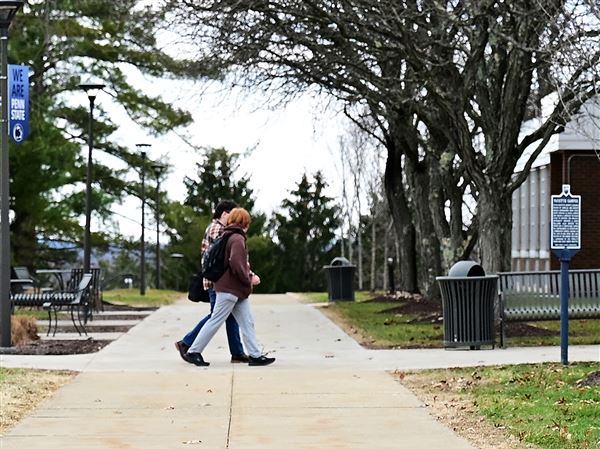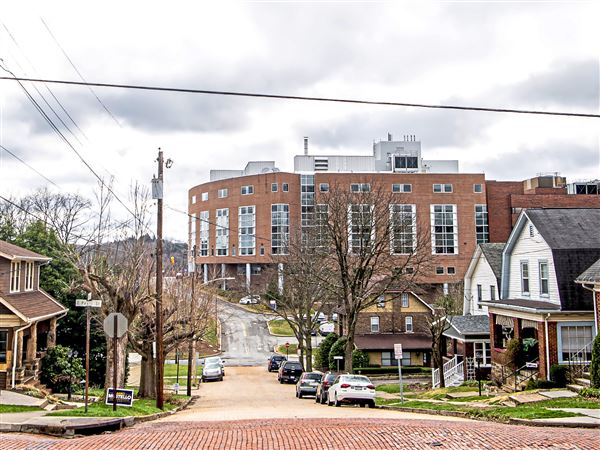It appears the 200 school districts across the state, including 13 from Allegheny County, that are awaiting millions of dollars in state reimbursements for construction projects will continue to wait.
The reason: Legislators included only a modest increase to the reimbursement fund of the PlanCon program that since 1973 has provided partial reimbursements to districts for new construction or renovation of buildings.
The $10 million increase to the $296 million annual PlanCon fund for distribution is not expected to have much effect on the backlog of payments that has existed for several years, given that Allegheny County districts alone are owed more than $18 million.
Along with providing the increase, the new state budget signed by the governor on July 10 ends the October 2012 moratorium on districts‘ ability to apply for PlanCon reimbursements, a moratorium set in place because of the backlog of payments. But the ending of the moratorium largely means that more districts can get in line for reimbursement that may be years away.
An alphabet soup
PlanCon is an acronym for the Planning and Construction Workbook of the state education department. The state has provided reimbursement for school construction since the 1950s, but the process as it is known today has been in effect since 1973. The passage of Act 34 at that time created a complicated 11-step process with parts A through K required for partial reimbursement for school construction and renovation costs. The process is voluntary but mandatory for districts that want state reimbursement.
A project is eligible for reimbursement upon its approval of part G but does not get funded until approval of a PlanCon Part H application.
The clog in the pipeline exists after approval of part G. Of the 338 projects currently in the PlanCon pipeline, 200 have been approved through Part G.
“Everybody who is waiting is waiting for approval of H and [the state Education Department doesn’t] want to approve it, because if they approve it then they have to pay,” said Richard Liberto, business manager of the Penn Hills School District, which is owed $4 million in reimbursement on its $64 million high school project. The district is also currently finishing a new $40 million elementary school project that is also in the pipeline for reimbursement.
In addition to Penn Hills, other districts in Allegheny County awaiting approval of Part H are: Allegheny Valley, Avonworth, Bethel Park, Deer Lakes, McKeesport Area, Montour, Moon Area, Mt. Lebanon, North Hills, Pittsburgh, Plum and South Fayette. Quaker Valley is preparing to submit its Part H application for its middle school project, and officials there know they will be getting into a long line waiting for reimbursements.
What has angered some officials in those districts is that charter school lease reimbursements, which are paid from the same PlanCon fund, have not been backlogged. In 2012-13, $8.2 million was distributed to charter schools for lease reimbursements, according to Tim Eller, spokesman for the Department of Education.
In a May report to the General Assembly, the state Department of Education said there are currently 338 projects to fund, requiring $1.6 billion through the life of the amortization schedule. Reimbursements are provided over a number of years, often spanning the length of a project‘s financing.
The report also said an additional $105 million would be needed for the 2013-14 school year in order to approve the 200 projects approved through part G in that year.
Complex funding formula
The level of state reimbursement is determined by a complex formula that considers the total project cost, type of school, district wealth and number of students in each classroom. Less wealthy schools receive a higher rate of reimbursement than wealthy schools.
The report said that since 1979-80, the state has paid more than $8 billion in construction reimbursements.
Because the PlanCon process requires districts to hire architects, arrange financing and sign construction contracts, they often spend up to 25 percent of the project cost before they get to Part G.
“The districts have been sort of forced into this situation where their bills are coming due and they have to pay for it and they didn’t bank on the fact that this state reimbursement would be delayed,” said Hannah Barrick, director of advocacy for the Pennsylvania Association of School Business Officials.
“In most cases, the building is built. They‘re using the building. But now they haven’t started receiving their reimbursements from the state. Some of them have been waiting two or three years without receiving anything. They‘ve had to cut programs to cover what they thought they’d be receiving from the state,” Ms. Barrick said.
John Callahan, senior director of government affairs for the Pennsylvania School Boards Association, told the state House Education Committee in March that school districts that haven‘t gotten their anticipated reimbursements are struggling to balance their budgets.
“Districts that have carefully planned for financing school construction and renovation projects have had to throw their plans out the window and use up their reserves waiting for reimbursements, cancel needed repair projects, increase taxes, cut programs and services and borrow additional money to cover the state‘s share of their debt payments,” Mr. Callahan told legislators. Mr. Callahan was speaking in favor of legislation proposed by state Rep. Seth Grove, R-York, that aimed to streamline the reimbursement process to five steps and include an additional $100 million in the state budget.
Mr. Liberto said Penn Hills should be receiving about $1 million a year in PlanCon reimbursements.
“We started our project back in 2008 and when we started, the district along with the architects had to submit a boatload of information to [the state Department of Education]. When we borrowed the money for the project, we were told, here‘s what you can expect to receive in reimbursement over the term of the bond. So we started the projects and got them up and running and submitted everything to [the Department of Education] up through step H and from that point on we have gotten no response from them,” Mr. Liberto said.
Mr. Liberto echoed other school officials in saying the lost reimbursements are leaving big holes in district budgets.
“Not only am I out of that revenue, I have to make up for that hole with the fund balance. We‘ve had to cut other things,” Mr. Liberto said.
He said Linton Middle School needs a new pool and updated auditorium. The PlanCon reimbursement money was slated for those projects, which are now on hold.
Other local districts affected by the PlanCon backlog include McKeesport Area, which so far is owed $740,345 on its elementary/intermediate school projects, and Avonworth, which is awaiting $1.4 million on its new $23.4 million K-2 primary center. Brad Walters, Avonworth’s director of fiscal management, said his board would not have approved the project without the expectation of the reimbursement.
For its new high school, which opened in January 2012, the Bethel Park School District is owed annual reimbursements of $493,198 since the 2010-11 school year for a total of $2.47 million through the 2014-15 school year. The reimbursements are scheduled to take 25 years to complete, said spokeswoman Vicki Flotta.
The Mt. Lebanon School District is awaiting $1.8 million in reimbursements so far on its $109 million high school construction and renovation project, said Jan Klein, director of business services. It‘s due another $625,000 in 2014-15.
Ms. Klein said when she was preparing to submit paperwork for PlanCon stage H in early 2012, other school officials told her there was no point in doing so because there were no new reimbursements being made. But, she said, she submitted the district’s paperwork to make sure it is in line to receive the funding whenever it becomes available.
So far the district has been able to cover the budget holes left by the lack of reimbursements with unexpected revenues and belt-tightening. “It‘s something we monitor on a regular basis,” she said. “If we didn’t have the strength of our financial position, we would probably have to look at program cuts from the get go. I presume that‘s what the poorer districts are doing.”
Ms. Klein said Mt. Lebanon officials have met with state Rep. Dan Miller and state Sen. Matt Smith. “They are both very much aware of our situation and they keep us informed of what is going on at the legislative level, but it is complicated and the state is not getting the revenue that it expected, so there is not much money to put into the pot,” she said.
Mary Niederberger: mniederberger@post-gazette.com; 412-263-1590; Eleanor Chute contributed: echute@post-gazette.com; 412-263-1955.
First Published: July 24, 2014, 4:00 a.m.


















